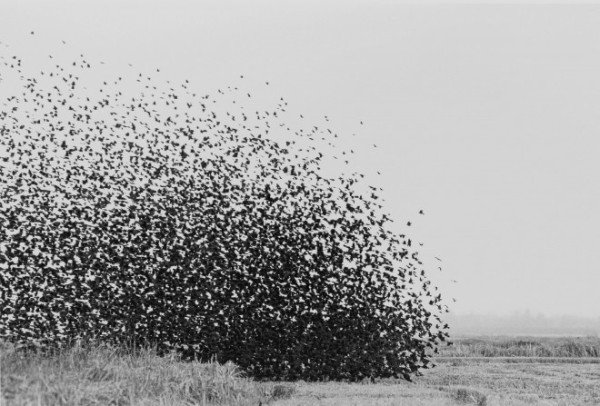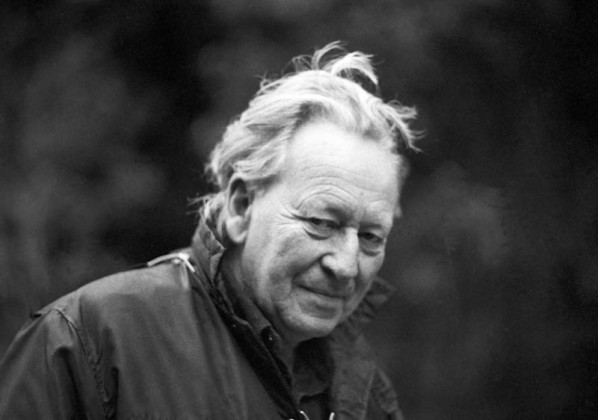The Swarmachine: A Historical Puzzle (Part 1) Anomalies
AnomaliesMowat, and those that follow him – Tarpley, Marshall, and Engdahl, present a picture much different from this. For them, the entirety of the revolution – and not just the profound subversion – is created from the ground-up in a bid to destabilize Russia by gaining supremacy over its petrol-based territorial concerns. They present an alternative genealogy of these youth-centric, media-optimized and information technology-enhanced movements, finding a precedent long before the cases of Poland and Czechoslovakia in the 1980s and linking them instead to advances made in social psychology at the British Tavistock Institute in the 1960s. “As far back as 1967,” writes Mowat, “Dr. Fred Emery, then director of the Tavistock Institute, and an expert on the ‘hypnotic effects’ of television, specified that the then new phenomenon of ‘swarming adolescents’ found at rock concerts could be effectively used to bring down the nation-state by the end of the 1990s.”xxvi Mowat adds that this swarm behavior was found in practice during in social movements in France of 1967 and 1968, charging that these were aspects of NATO plan to destabilize the government to Charles De Gaulle. Engdahl contributes to this narrative, writing that “A curious tiny group named the Situationist International played an inordinately large role behind the student uprisings in May 1968 leading some researchers to posit that it was backed or steered by US intelligence.”xxvii
 “swarming adolescents”
“swarming adolescents”The genealogy is continued with the figure of Dr. Howard Perlmutter, a leading scholar on globalization issues and the internationalization of corporate structures. Mowat draws particular attention to the fact that Perlmutter had been a longtime “follower of Emery.”xxviii He notes that while participating in a “Program for Social Innovations in Global Management” at Cleveland, Ohio’s Case Western Reserve University, Perlmutter envisioned how a “rock concert in Katmandu” depicted clearly how the forces of globalization were shifting the traditional bedrocks of culture – something Mowat sees not as the inherent deterritorializing tendencies of transnational capitalism, but the hints of a strategy going back to Emery’s own preoccupations ‘swarming adolescents.’ From the rock concerts to ‘global events’ to mediation via mass media, Perlmutter sees the groundwork being laid for a ‘global civilization’; extrapolating, Engdahl writes that these ideas “contained the core blueprint for the ‘new and improved’ US-made regime change, the modern form of US-staged coup d’etat,” and then immediately links this to the interest in swarming emerging from RAND theorists like Arquilla and Ronfeldt.xxix
This genealogy is puzzling for several reasons. For one, the leap from Perlmutter to RAND is conducted without drawing clear the historical linkages between the two; the reader is left to assume that there are indeed associations between the two. With this linkage in question, the importance of Emery and Perlmutter, much less the Tavistock Institute, becomes extremely less clear – as well as the notion that youth-based swarming tactics are generated via suggestibility induced by television, rock concerts, and other forms of mass-media. Engdahl briefly mentions the history of Tavistock, writing how after World War 2 the Rockefeller Foundation subsidized the organization and reconfigured its internal organization; the interest in this social psychology research lab was allegedly to “co-opt legitimate psychological insights into social groups and social dynamics in order to refine techniques of manipulation.”xxx
The case of the color revolutions is not the first time that Tavistock and its affiliation with the Rockefeller Foundation has been linked to countercultural networks. Mark Stahlman, writing on the Nettime mailing list, calls attention to cybernetician Gregory Bateson’s speech at the 1967 Dialectics of Liberation conference,xxxi titled “Conscious Purpose vs. Nature.” This talk used cybernetic models, discovered in the military-industrial labors of the second world war, to depict civilizations as an entity bound up in complex systems; he argues that both traditional structures of power and the forces resistance to them are ultimately flawed due to the inability to articulate the world as an interconnected ecology. Stahlman characterizes these developments as part of a “psy-war sensibility”xxxii – after all, the Dialectics of Liberation’s organizer, anti-psychiatrist R.D. Laing, had been affiliated with Tavistock from 1957 to 1967.xxxiii He further argues that “[countercultural struggles] are at the heart of the ‘Rockefeller’ effort to ‘social engineer’ the world through ‘control by choice’ for more than 60 years.”xxxiv
 R.D. Laing
R.D. Laing Gregory Bateson
Gregory BatesonWhere does this ongoing interest in the Tavistock Institute come from? The source here, presumably, would be the ongoing preoccupation with the institution held by the constellation organizations and journals orbiting Lyndon LaRouche. LaRouche’s own trajectory had begun in the Marxist circles in New York City during the 1950s and 1960s; during the events at Columbia University in 1968, he launched the National Caucus of Labor Committees (NCLC) with the aid of members of the Progressive Labor Party – the latter having been expelled from the Students for a Democratic Society (SDS). The NCLC took a hardline stance against the radical counterculture, seeing movements like the SDS as being ‘tainted’ by the influence of Black Nationalism, Third World liberation struggles and the Frankfurt School theories espoused by Herbert Marcuse. By the early 70s this discontent blossomed into a massive conspiracy theories, connecting US intelligent services to a bid for world domination perpetrated by the British government. This increasingly paranoid worldview was reflected by a shift from the far-left, following an abandonment of Marxist ideology, to to the far-right, with ties being formed with the Ku Klux Klan and Liberty Lobby (founded by the staunch anti-Semite Willis Carto). Despite these overtures, LaRouche’s network is large, operating through various organizations (the aforementioned NCLC, the International Caucus of Labor Committees, the Schiller Institute), political parties (the US Labor Party), and publications (New Solidarity, Campaigner Magazine, Fusion, Executive Intelligence Review).
The critics of the color revolution model – Tarpley, Marshall, Engdahl (with the exclusion of Mowat) – have all been affiliated, at one point, with various LaRouche organizations. Stahlman, too, is without exception, having written for Fusion Magazine,xxxv while also having served as the vice-president of Computron Technologies Corporation, an information technologies firm close to the LaRouche network.xxxvi Tarpley, meanwhile, was the editor of The Campaigner, the official organ of the NCLC, a board member of the Executive Intelligence Review, and the president of the Schiller Institute’s US branch; he distanced himself from the network in the mid-90s. Marshall seems to lack direct ties to any of these organizations, in 2003 he organized a talk by LaRouche for the College Democrats organization at Middlebury College.xxxvii Engdahl can be found contributing to the Executive Intelligence Review until the mid-90s, after several decades of being affiliated with the NCLC. A 1974 issue of The Campaigner discusses Engdahl at length, describing him as the victim of a bizarre “brainwashing plot” conducted by the CIA, presumably based on methods perfected at the Tavistock Institute.xxxviii
Furthermore, each idea propagated in their analyses of the color revolutions is based upon precedents found within LaRouche’s expansive conspiracy theories. For example, a 1974 issue of the the NCLC’s New Solidarity attempts to the link, much like Engdahl in Full Spectrum Dominance, the Situationist International and the events of May ’68 to the CIA:
The Makhnist Situationist International pig countergang created by the CIA from scratch in 1957 in France under the slogans “Kill the Vanguards!,” “Workers Councils Now!,” and “Create Situations!,” is the paradigm example of a CIA synthetic all-purpose formation. The loose and programless anarchist “left cover” countergang on the SI model is ideal for the CIA for the recruitment of new agents, the launching of psywar operations…xxxix
Then we have the curious repetition of the theme of rock music, which Mowat and Engdahl both fold into their discussion of the swarming youth movements. Rock music has been a frequent target of LaRouchian critique, ranging from the relationship of the Grateful Dead to the CIA’s MK-ULTRA program to the atmosphere of ‘Dionysian intoxication’ that concerts and festivals generates. An article in The Campaigner in 1978 is even more explicit, and connects several of the strands found in the criticisms of the color revolutions:
…one need trace the origins of today’s standing army of rock musicians and exotic composers no further historically than the post-World War II academic hegemony of the malicious Aristotelian doctrine of “cultural relativism” synthesized in the London Tavistock Institute in the late 1930s and associated with warped, former Office of Strategic Services intelligence associate and “cultural anthropologist” Margaret Mead [the wife of Gregory Bateson]… Mead’s and [Gustave] Reese’s assertion that any manifestation of general cultural retardation, now matter how bestial or degenerate, has its “democratic” right to exist in opposition to policies of cultural, intellectual, and technological development serves not only for the perseverance of long-standing British colonial policy for the developing sector. The same outlook, in the form of the Frankfurt School-Tavistock Institute known popularly as Adorno and Nevitt Sanford’s The Authoritarian Personality has constituted the basis of direct extension of the most bestial aspect of that colonial culture to the advanced sector nations over the last twenty years.xl
Reviewing the innumerable threads of LaRouche’s conspiratorial ideology, one begins to see the emergence of a rich tapestry revolving almost entirely around the concept of “social engineering,” enacted by the British Empire and the Rockefeller Foundations and various ‘front’ organizations, like the CIA and Tavistock. The problem is that not everything that be dismissed entirely out of hand; like all effective propaganda systems, the LaRouche conspiracy blends well-documented historical facts with outright fabrication, collides unfounded conjecture with coincidence, and distills the complexity of events swirling through time down to a very basic linearity – a historical determinism founded on the dialectical opposition of, oddly enough, Platonic universalism with Aristotlian ‘relativism.’
What the LaRouchians concern themselves, with their interest in the Tavistock Institute, is the cultivation of what Philip Mirowski has called the “Cyborg Sciences” and Eugene Thacker the “informatic” paradigm.xli This includes the interrelated domain of post-war sciences that runs the gamut from cybernetics to game theory, communication theory to molecular biology, family therapy to military systems analysis to neoliberal economic systems; it is also true that many of the organizations that the LaRouche network dedicates so many pages too – the Rockefeller and Ford Foundations, the Macy Conferences, Tavistock, etc. – were essential in developing these sciences, and through their relationship to social and material bases have laid the groundwork for much of our contemporary, globalized world.
This fact has been woefully under analyzed, and on a mass-scale, represents a critical blind spot for those attempting to eek out exit-points from the current world system. Misguided ideologues like the LaRouchians only obfuscate these matters further, distorting the actuality of these events and the technological, political, economic, and philosophical filiations that made them possible and likewise have been created by them. The end-point for each of these sciences has been the swarm – the network distribution of disparate forces and their capability for collective movements, self-organization, and self-regulation – and the fact that both opposition figures as well as those who wield instruments of power have been able to latch onto this formulation as a source of agency merits a deeper look.
Sifting through the scattered events, ideas and movements that LaRouche and his followers have so unfortunately parsed together into a cohesive, singular image, can we construct an alternative genealogy, one that is far more equitable to contributing to our understanding of – and hopefully resistance to – the neoliberal society, something than can only be described, as Deleuze once did, as a society of control?












